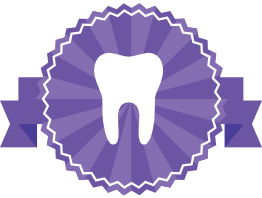Oral Hygiene

The secret to a beautiful, healthy smile is having a good oral hygiene routine that starts at home. A good dental hygiene routine is quite simple – brushing at least two times a day and flossing your teeth at least once a day will help keep your teeth and gums in optimal health between routine visits to the dentist for dental exams and cleanings.
Having a beautiful smile is not all thats at stake: numerous studies show that there may be a direct link between poor oral health and chronic inflammatory diseases such as diabetes and cardiovascular disease. Conditions that when left untreated can lead to stroke or heart disease. Good oral hygiene is an essential, vital part of your overall health and well being.
Gum disease is no laughing matter. And while daily brushing and flossing will help keep dental plaque at a minimum. Dr. Schwan and his team of professional dental hygienists can help you achieve excellent oral health through regular professional teeth cleanings. Professional cleanings can remove plaque in places where normal brushing and flossing won’t reach.
When you visit with us for your checkup and cleaning, we can review your brushing and flossing technique to make sure your home routine is effective.
How To Brush Your Teeth
If you have any pain while brushing or need some tips about brushing properly call the office to schedule an appointment
Dr. Schwan recommends using a high quality electric toothbrush or a soft bristled tooth brush. Soften the toothbrush with warm water before applying a small amount of toothpaste onto your brush. Position the brush at a 45 degree angle to where your teeth and gums meet. Then, using light but firm pressure move the brush in a circular motion for about 20 strokes (or about 10 seconds).
When the brush strokes are complete, keep repeating until the outer surfaces of the top and bottom teeth are completed. Do the same sequence for the biting surfaces of the teeth, making sure you reach your back teeth along with the surrounding gum tissue.
For the inside surfaces of the teeth, use the tip of the toothbrush and a gentle flicking motion — direct the toothbrush from the gum line down. Do this 2 or 3 times and then move on to the next set of teeth until you have done all of them.
When you are finished brushing, be sure to rinse your mouth vigorously to get rid of any plaque that became loose while brushing.
Dr. Bob’s Helpful Brushing Tips
- Wait at least one half hour after drinking/eating before brushing
- Use an electric toothbrush (SonicCare Or OralB) for most effective brushing stroke
- Soften the brush bristles using your thumb and warm water: the brush is stiff from your last brushing.
- Use a “vibratory” motion and pressure to clean your teeth. Do not scrub, as this can damage your teeth and gums.
See more brushing techniques at MouthHealthy.org from the American Dental Association.
How To Floss Your Teeth
Gum disease usually occurs in the spaces between your teeth where your toothbrush cannot reach. Daily flossing is an effective way of removing plaque from these areas. Proper flossing requires practice and time, but it is time well spent.
Start with a piece of your favorite dental floss about 18 inches long. Lightly wrap each end around your middle fingers. Gently slide the floss between the teeth using a back and forth sawing motion.
Be sure to angle the floss so it slides along the tooth in a C-Shape. Direct the floss towards the gum line, then slide it up and down the surface of the tooth, making sure it goes lightly under the gum line. Be careful not to cut the gum tissue when doing this.
Slide the floss up and down the sides of each tooth, repeating until you have flossed between each tooth. When you are finished flossing, be sure to rinse your mouth in order to remove all of the particles and plaque. For the first week of flossing, you will probably experience some soreness and bleeding of the gums. This is normal, but be sure to contact Dr. Schwan if it persists after the first couple of weeks.
For more flossing information and techniques read about them at MouthHealthy.org.
Contact Dr. Schwan for More Information

Good brushing and flossing habits cant be beat, but nothing takes the place of regular checkups and dental cleanings to help ensure optimal dental health. To setup an appointment with Dr. Schwan and his hygienists, Please contact us or call us at (610) 431-0700.
We are Located in West Chester Pennsylvania, across from Chester County Hospital. Dr. Schwan always welcomes patients from the greater Chester County area.


